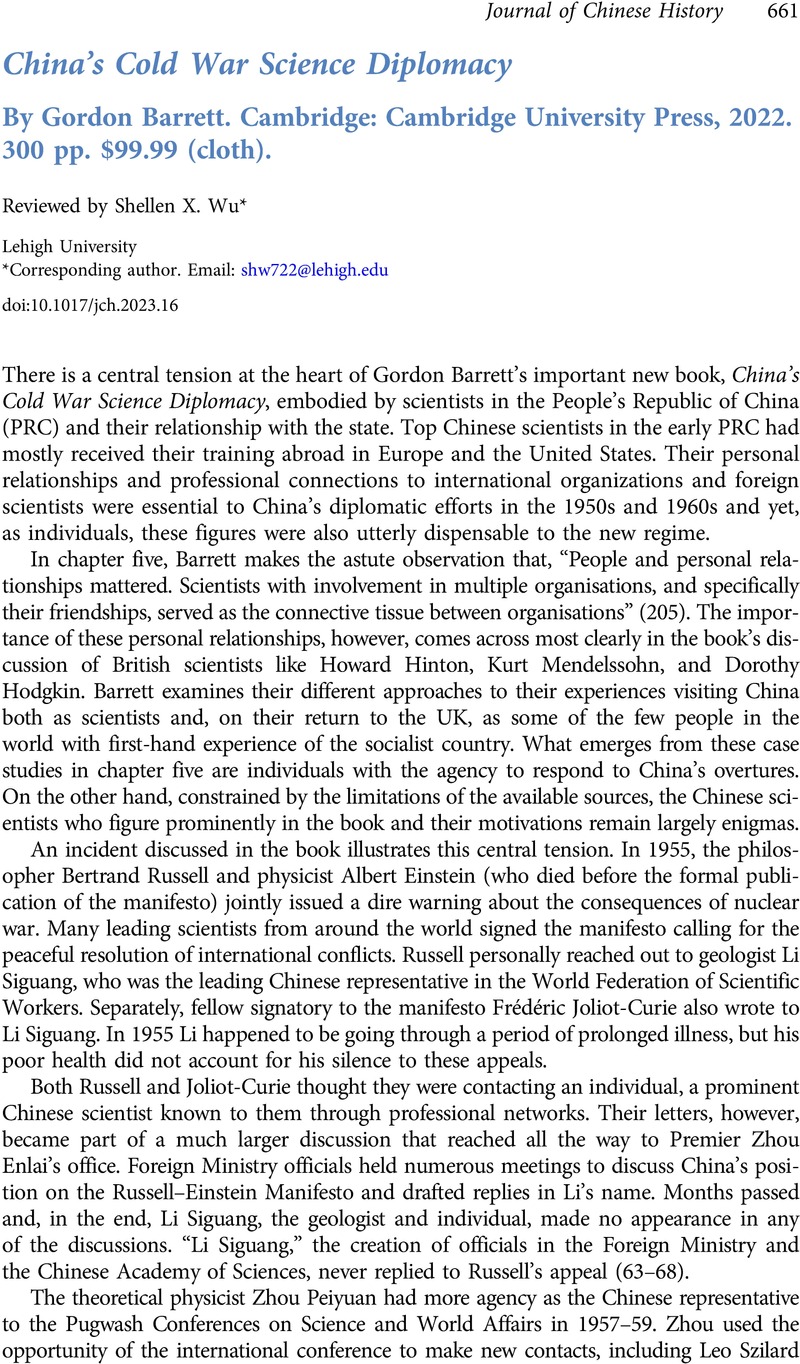No CrossRef data available.
Article contents
China's Cold War Science Diplomacy By Gordon Barrett. Cambridge: Cambridge University Press, 2022. 300 pp. $99.99 (cloth).
Review products
China's Cold War Science Diplomacy By Gordon Barrett. Cambridge: Cambridge University Press, 2022. 300 pp. $99.99 (cloth).
Published online by Cambridge University Press: 09 June 2023
Abstract
An abstract is not available for this content so a preview has been provided. Please use the Get access link above for information on how to access this content.

- Type
- Book Review
- Information
- Copyright
- Copyright © The Author(s), 2023. Published by Cambridge University Press



